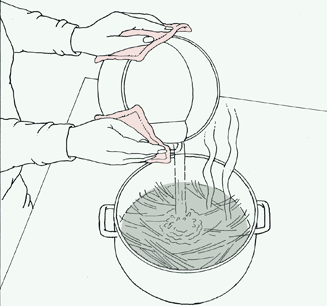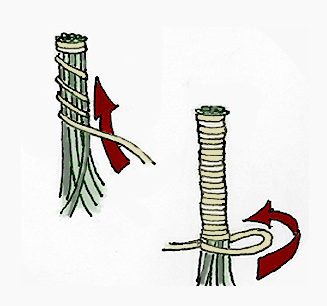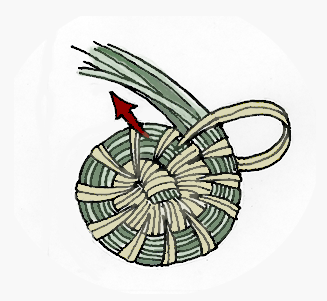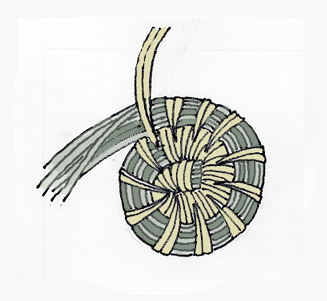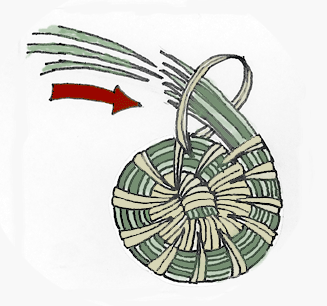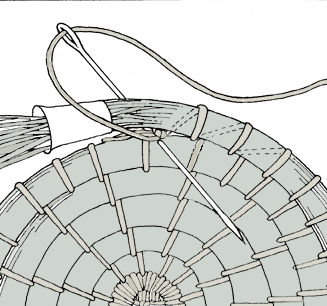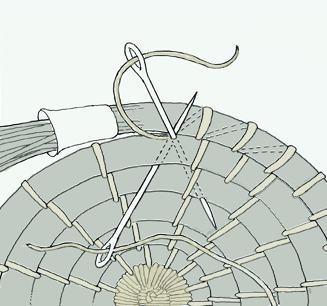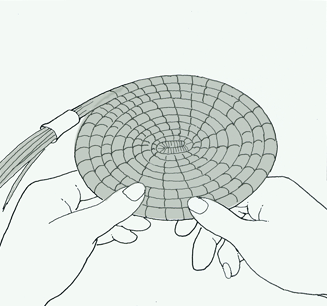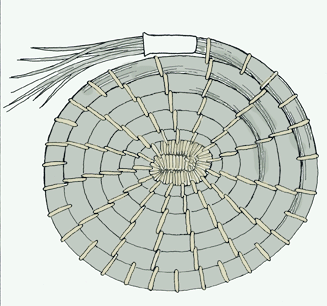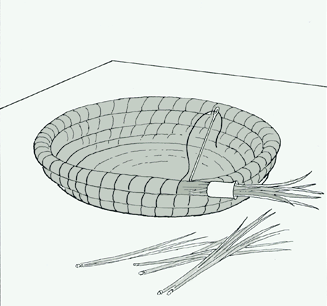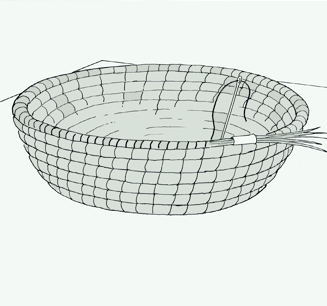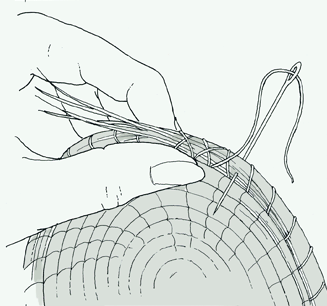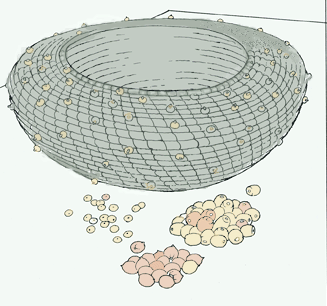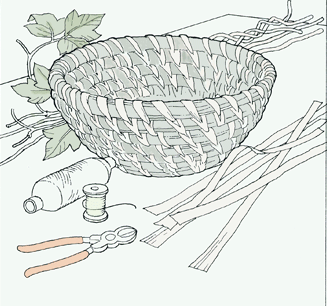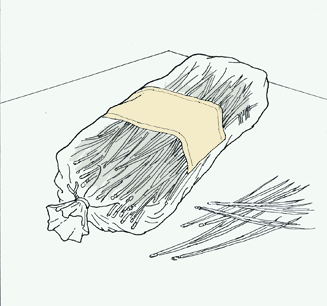Pine Needle Basket Workshop
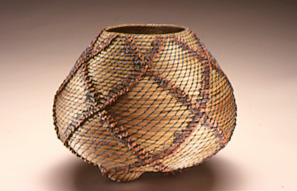
Clay Burnette created this pine needle basket which he calls "Tribal". You can make a pine needle basket, too. See what supplies you will need to make a simple basket of your own below and then use the navigation at the top to follow the steps.
List of Materials
- A large bunch of pine needles, with the needles measuring at least 5 to 6 inches in length
- 1 pint of boiling water
- 1 large pan in which to soak the pine needles
- 1 large tapestry needle (purchased at craft store)
- 1 hank of raffia
- Scissors
- 1-inch length of soda straw
